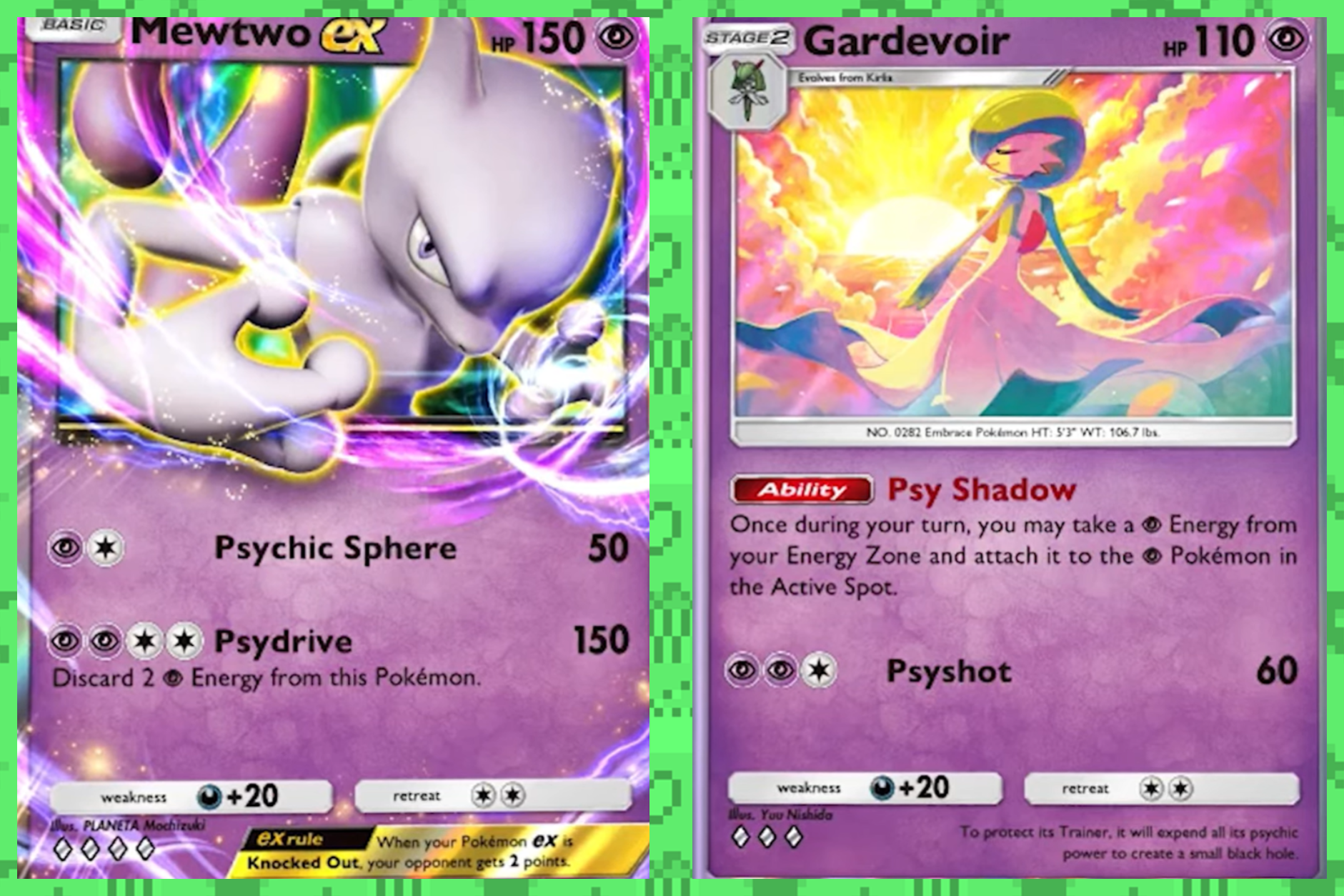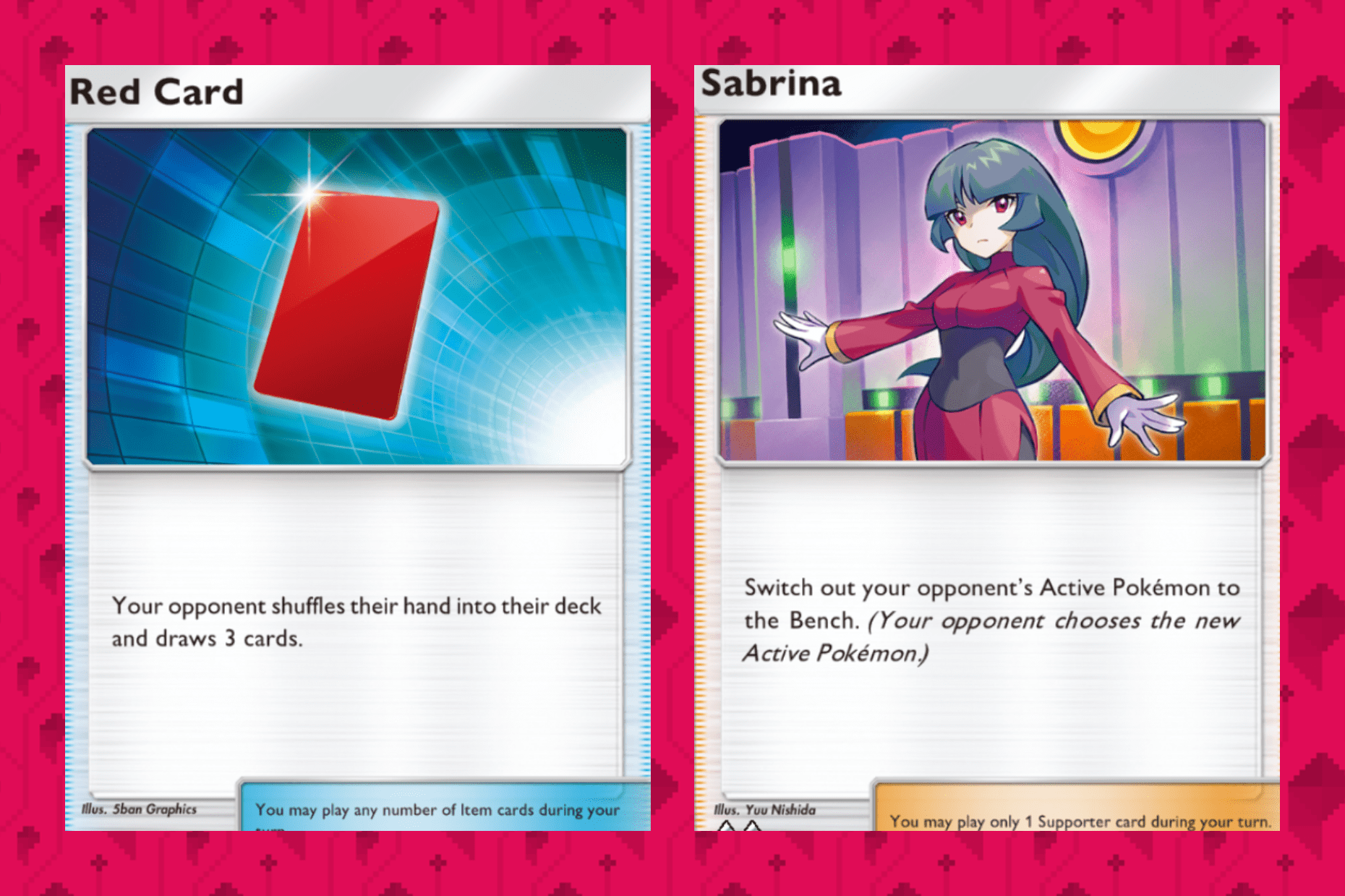
The Pokémon TCG Pocket meta has become clear, now that the mobile card game has officially drained the battery life of every smartphone this side of Kanto.
Released in late October 2024, Pokémon TCG Pocket is primarily a card-collecting game, though there is a competitive element — a streamlined iteration on the classic Pokémon trading card game. There’s incentive to play battles, too, as winning earns you XP, which helps you level up, which helps you open more booster packs, which helps you build better decks to win more battles. Ah, the great mobile game feedback loop.
What follows is a summary of the Pokémon TCG Pocket meta as of December 2024, including the best decks and the best cards. We’ll update this guide as the Pokémon TCG Pocket meta meaningfully shifts.
What is the Pokémon TCG Pocket meta right now?

At present, all available cards in Pokémon TCG Pocket are from the Genetic Apex expansion, which features three types of booster pack: Mewtwo ex, Pikachu ex, and Charizard ex. No huge surprise, but the three headline cards have come to define the meta since the game’s release.
Decks in Pokémon TCG Pocket comprise 20 cards each. Though you can mix and match types when building a deck, the viable decks du jour are designed around one element. Since most attacks are powered by a specific elemental type, you don’t want to leave the element you draw each turn up to a coin flip. Pokémon TCG Pocket has enough coin flips already.
Furthermore, the best decks are for the most part built around one or two specific cards, with the rest of the deck padded out by trainer cards (items or supporters) and basic Pokémon of the same elemental type. As of December 2024, those top decks are:
- Mewtwo ex and Gardevoir (psychic-type)
- Pikachu ex (electric-type)
- Charizard ex and Moltres ex (fire-type)
- Articuno ex and Lapras ex (water-type)
In other words, smash that “concede” button if you see any of the above cards on your opponent’s side — and we get into more detail about why these decks are so successful below.
Pokémon TCG Pocket best decks
Knowing the best cards of the moment is one thing, but getting those cards is another matter. Right now, the Pokémon TCG Pocket meta is defined by ex cards — high-power cards that are also extremely rare.
You can get these from booster packs (you can see your chances of specific cards by clicking the “offering rates” button on the lower-left corner), but if you’re struggling, know you can get specific cards by exchanging pack points, a currency you’ll earn by opening booster packs.
Ex cards start at 500 pack points, though, and currently, you only get five pack points for every booster pack you open. So even if you’re willing to spend IRL money on Poké Gold to open a bunch of packs, you’ll still have to sit through a lot of mindless clicking before you can afford the exact ex card of your choice.
In other words, until trading is introduced in January 2025, the best way to get any of the following cards is… Luck.
Mewtwo ex and Gardevoir deck

Mewtwo ex is dominating the Pokémon TCG Pocket meta at the moment, thanks to its Psydrive attack, which deals 150 damage. Few Pokémon have 150 HP to survive such a hit, but the attack costs Mewtwo ex four energy to use and further discards two psychic-type energy with each use.
The trick here is to lean on Gardevoir. Gardevoir’s ability, Psy Shadow, allows you to add an extra energy to whatever Pokémon you have in the active spot — and you can use it even with Gardevoir on your bench. This combo allows you to recoup the two energy you burn with each use of Psydrive (one from your turn naturally and one Gardevoir’s ability), essentially guaranteeing 150-damage attacks with no drawbacks.
Pikachu ex deck
Pikachu ex might as well be Ash Ketchum’s uncannily super-powered Pikachu. Pikachu ex isn’t part of an evolution chair, so if you draw it, you’re ready to play it. Its attack, Circle Circuit, also only costs two electric energy and deals 30 damage for every electric-type Pokémon on your bench. Stack all three slots on your bench with electric-type Pokémon, and you’re dealing 90 damage per turn.
Electric-type cards in general tend to have lower retreat costs (Electrode has a free retreat, for instance), allowing you to easily swap out cards as needed, keeping your bench — and Pikachu ex’s attack power — at full capacity. This deck also works well with Zapdos ex or Jolteon as backup attackers; both have attacks that can deal up to 200 or 160 damage respectively.
Charizard ex and Moltres ex deck
The Charizard ex deck functions a lot like the Mewtwo ex deck in that you have to use one Pokémon to generate energy for another. The key here is to open with Moltres ex. With its Inferno Dance attack, you flip three coins, and for every heads you get, you can apply one bonus fire energy to a Pokémon on your bench. You can load up a Charmander or Charmeleon with with up to three energy per turn.
When your Charmeleon is ready to evolve into Charizard ex, it’ll hopefully have enough energy to use Charizard ex’s Crimson Storm attack, which costs four energy and deals 200 damage but also discards two energy per use. Pull off this combo correctly, and your Charizard ex card should have enough energy to persistently use Crimson Storm. Charizard ex also has 180 HP — enough to survive a hit from Mewtwo ex’s meta-dominating Psydrive attack.
Lapras ex and Articuno ex deck
Lapras ex was introduced via Pokémon TCG Pocket’s first battle event, and goes hand-in-hand with Articuno ex. Both cards are basic-stage, so you can play them immediately, and both cards have powerful attacks. Articuno ex’s Blizzard attack deals 80 damage to your opponent’s active Pokémon and 10 damage to any cards on their bench, so you can conceivably knock out any weakened Pokémon on your opponent’s back row. Lapras ex’s attack, Bubble Drain, deals 80 damage to your opponent but heals 20 HP to itself.
Both cards are powerful in a vacuum, but to make the most of this deck, you’ll want to use a Misty trainer card. When you play Misty, you flip a coin repeatedly until you get tails. For however many heads you get, you can attach that amount of water energy to one of your Pokémon. If luck is on your side, you can fully power up Lapras ex or Articuno ex in one turn.
Starmie ex, with its 90-damage attack and free retreat, is another good card to run in this deck.
Best cards to include in any meta deck

Finally, every meta-viable deck right now features at least one copy of each of the following trainer cards:
- Red Card
- Sabrina
- X Speed
- Professor Oak
Professor Oak lets you draw two cards, capitalizing on the universal card game theory that suggests, the more cards you draw, the better your chances of victory. Red Card is the opposite: It shuffles your opponent’s hand back into their deck, and then they draw three cards. (It’s best deployed to mess with your opponent after they play a Professor Oak or Poké Ball card, both of which add cards to their hand.)
Meanwhile, Sabrina forces your opponent to swap out their active Pokémon — great for getting out of a pinch. Lastly, X Speed reduces your retreat cost by one for the duration of your turn, allowing you to pull a card with low HP back to your bench in a pinch.
For more Pokémon TCG Pocket guides, we have explainers on the Premium Pass, Hourglasses, flair, how to get Mew, trading, and showcases.
